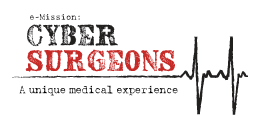The Skeletal System
Student Pages
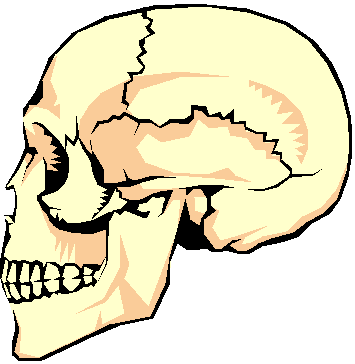 The adult human skeletal system has 206 bones that provide support, protection and shape to the body. It also has other important but lesser known functions that allow the body to store minerals, make blood cells, and grow.
The adult human skeletal system has 206 bones that provide support, protection and shape to the body. It also has other important but lesser known functions that allow the body to store minerals, make blood cells, and grow.
Bone Structure
The structure of bones allows for strength. The structure of joints allows for protection, movement and flexibility.
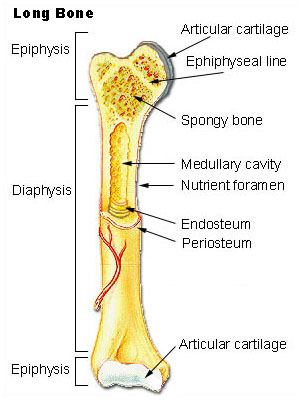
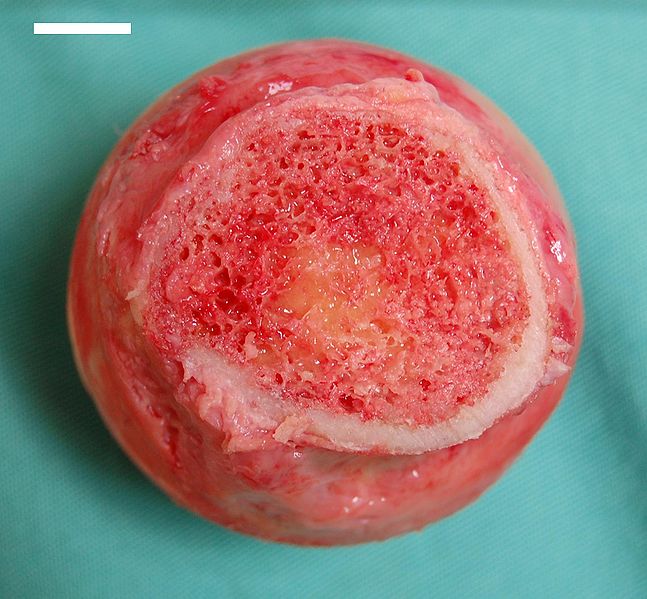
Structure of Long Bones
The diagram above shows the structure of a typical long bone. The outside, protective covering of the bone is the periosteum. The periosteum also helps form and repair bone tissue. The end regions of the bone are the epiphyseal disks; the bone shaft is called the diaphysis. The diaphysis walls are composed mainly of compact bone. Compact bone is tightly packed tissue. The epiphyses, in contrast, are composed of spongy bone tissue which is loosely packed. Both types of bone are strong and resist bending. The bones are filled with connective tissue called marrow.
Bone Function
Bones shape, support, and protect body structures. They aid in body movements, house tissues that produce blood cells, and store various inorganic salts.
Shape, support, and protect
If you look at the diagram of the human skeleton, you will easily see the bones that shape, support, and protect the internal body structures. For example,
bones of the head protect the brain, the eyes, and the ears; the ribs protect
internal organs in the chest cavity, and the pelvis protects the organs of the
abdominal cavity. Bones of the head also provide shape to the head and face.
Bones of the ribs provide shape to the chest.
Movement
Bones and muscles work together to allow the body to move. Muscles attach to bones and pull the bone to allow movement with support.
Blood cell production
There are two kinds of marrow contained in bones. In adults, yellow marrow stores fat and does not produce blood cells. Red marrow is present in spongy bones of the skull, ribs, sternum, clavicles, vertebrae, and pelvis. Red marrow forms red blood cells, white blood cells, and platelets. (It is red because of the red oxygen-containing pigment, hemoglobin.)
Storage of inorganic salts
The matrix of bone tissue is rich in calcium salts. Vital metabolic processes require calcium. A low blood calcium level stimulates cells in the bones called osteoclasts to break down bone tissue and release calcium ions. A high blood calcium level stimulates cells called osteoblasts to build more bone tissue and store calcium.
Bone tissue also contains magnesium, sodium, potassium, and carbonate ions. Bones also accumulate some metallic elements which are not needed for metabolic processes but are accidentally ingested.
The diagrams below show the organization of the human skeletal system and the major bones of the body.
Anterior View
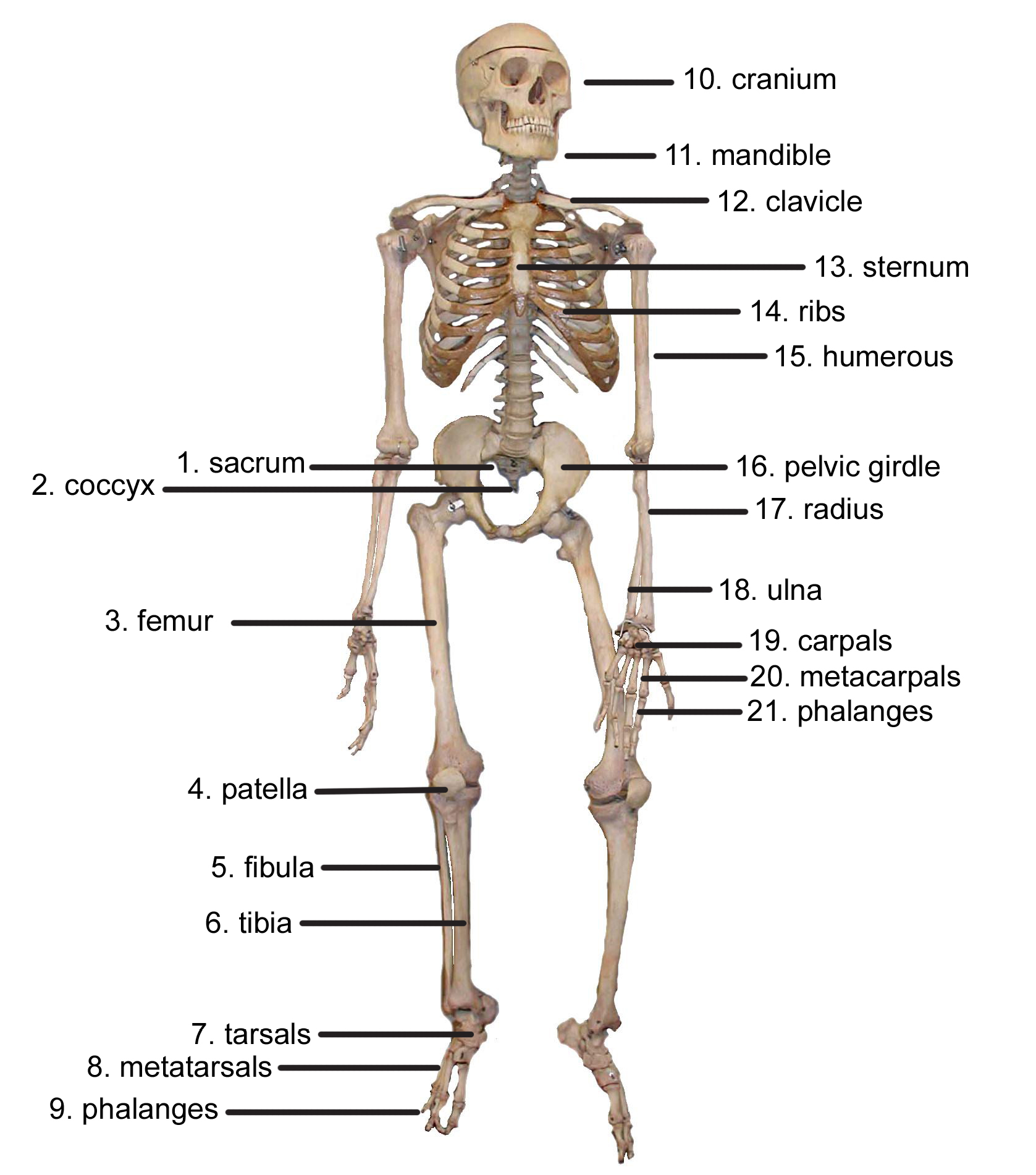
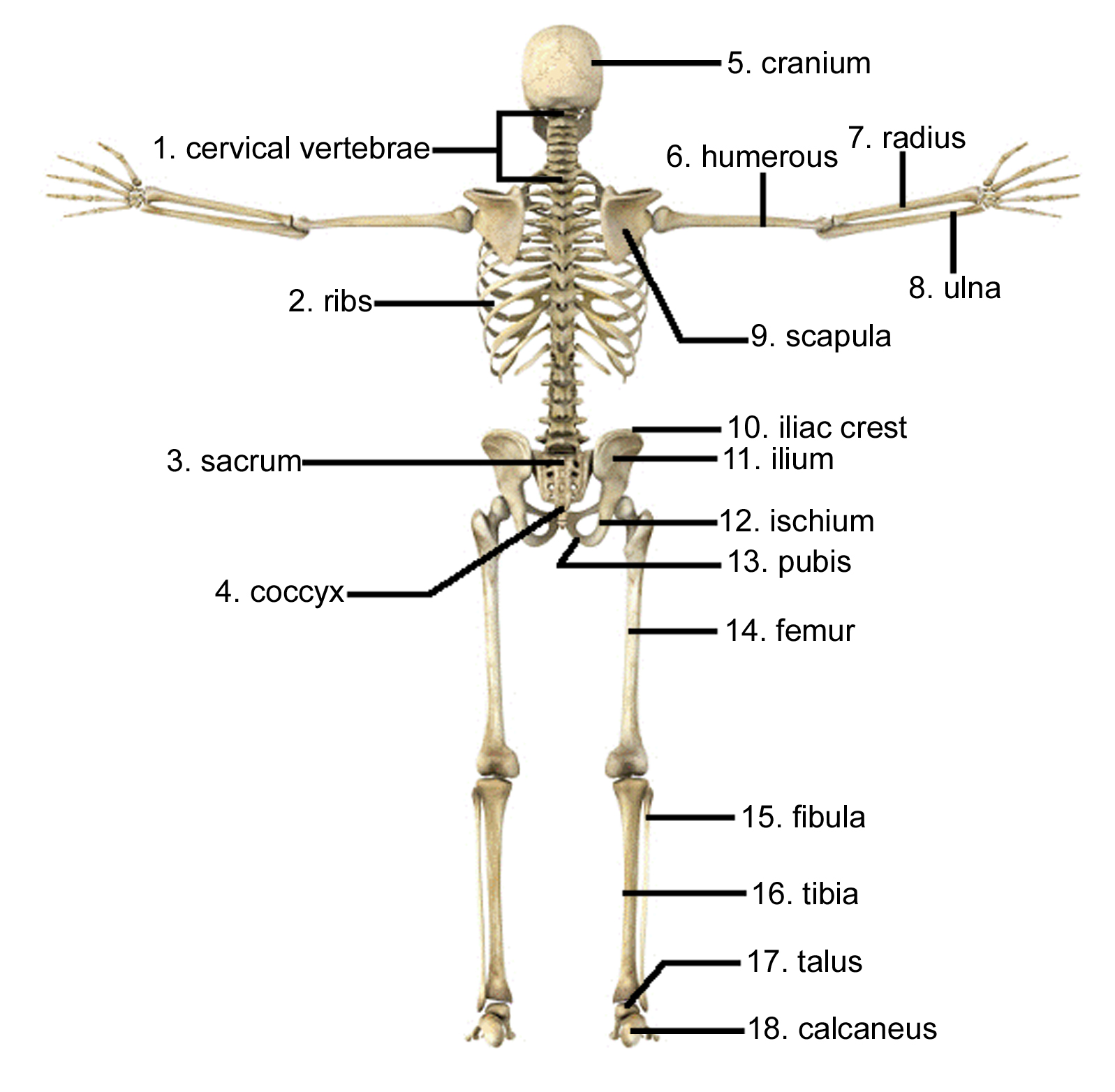
The axial skeleton consists of the bones that support and protect the organs of the head, neck, and trunk. These bones include:
- the skull (cranium and facial bones)
- the vertebral column (vertebrae, sacrum, and coccyx)
- the thoracic cage (ribs and sternum)
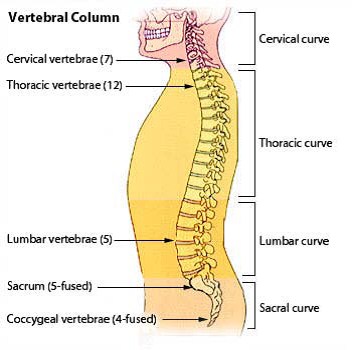
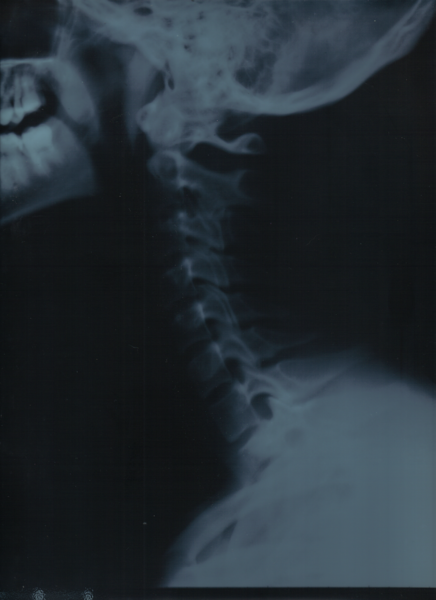
The appendicular skeleton consists of bones of the upper and lower limbs and the bones that connect the limbs to the axial skeleton. These bones include:
- the pectoral girdle (the scapula)
- the upper limbs (humerus, radius, ulna, carpals, metacarpals, and phalanges)
- the pelvic girdle
- the lower limbs (femur, patella, tibia, fibula, tarsals, metatarsals, phalanges)
Kinds of Joints
Humans have the strength offered by strong bones and flexibility, too. Flexibility is provided by joints. A joint is any place in the body where two bones meet. There are different kinds of joints in the human body which allow for different kinds of movements.
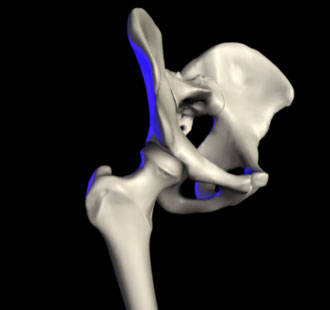 Ball-and-socket joint: This joint allows for rotational movement. Examples of ball-and-socket joints are the hip joint and the shoulder joint.
Ball-and-socket joint: This joint allows for rotational movement. Examples of ball-and-socket joints are the hip joint and the shoulder joint.
Hinge Joint:—This joints allows back and forth motion in one direction only. Hinge joints are found in the elbows, knees, fingers, and toes.

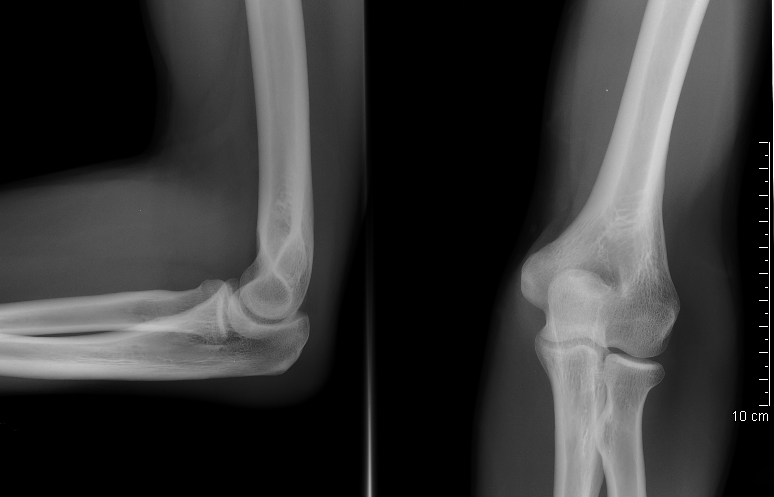
Gliding joint:—This joint is found in the wrists and ankles and allows bones to slide against each other.
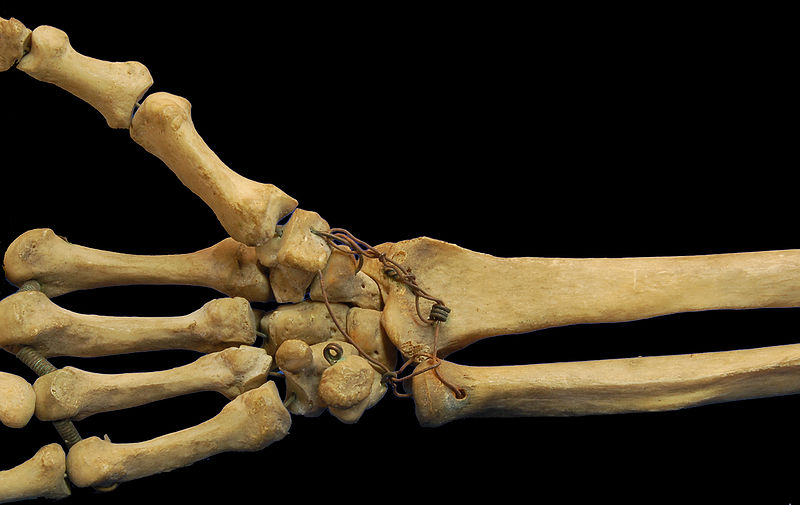
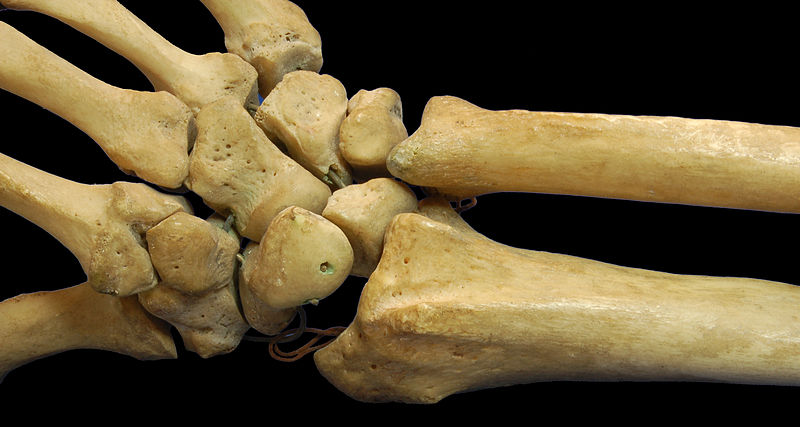
Pivot joint:—This joint allows bones to twist sideways against each other. Pivot joints are found in the vertebrae.
Fixed joint: There are some places where two bones meet but have no movement in an adult. Bones of the cranium (skull) are fixed joints. When a child is born the bones of the skull are movable to allow for brain growth. As the bones ossify (get harder), the bones fuse together and create the fissures (any of various lines between bones in the skull).
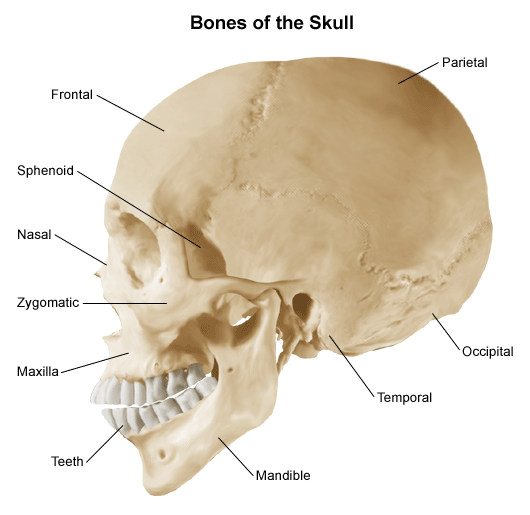
Image: http://www.centegra.org/Content.asp?PageID=P07647
Fractures
A fracture is a broken bone. The type of fracture that occurs depends on the type and location of the fracture, the seriousness of the injury, and the condition of the bone itself.
Fractures can occur because of injuries, osteoporosis (a softening of the bone due to a lack of calcium), or overuse. Stress fractures are due to overuse and are commonly seen among athletes.
Types of fractures
- Closed or simple—the bone is broken, but it does not break the skin.
- Open or compound—the bone is broken and it pierces the skin.
- Transverse—the fracture is at right angles to the long axis of the bone.
- Greenstick—the fracture is only on one side of the bone and does not go all the way through to the other side.
- Comminuted—a fracture that results in three or more bone fragments.
- Pathological--the bone has been weakened or destroyed by disease so that it breaks easily
- Stress--There is a hairline crack in a bone, sometimes not even visible on an x-ray, that is caused by repeated injury or stress on the bone.
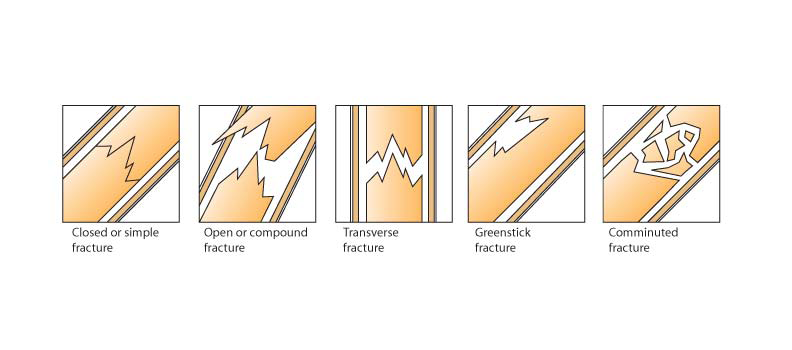
X-rays help determine the position of the fractured bones. If necessary, the orthopedist will correct the position of the bones to allow for proper healing. This correction is called “reduction” of the bones.
Types of fracture treatment
Several types of treatment may be used to correct a broken bone’s position and allow it to heal properly. A plaster or fiberglass cast can be applied after the bone has been repositioned to immobilize the bone while it heals. Depending on the location of the fracture, the cast or splint may allow some movement at a joint.
Surgical procedures are performed when the fracture is severe or when the bones could not heal in a proper position without internal fixation. In this open reduction procedure, an orthopedist, a doctor specializing in the branch of medicine that corrects and prevents skeletal disorders and injuries, repositions (reduces) the bones into their normal positions, and often holds the bones together with plates, pins, or screws to allow the bones to heal properly. Rods may also be inserted down through the marrow in the center of the bone.
External fixation may also be used to treat fractures. Pins or screws are inserted into the broken bone above and below the fracture. The bone is repositioned and the pins or screw are connected to a metal bar outside the skin. After healing, the external bar is removed.
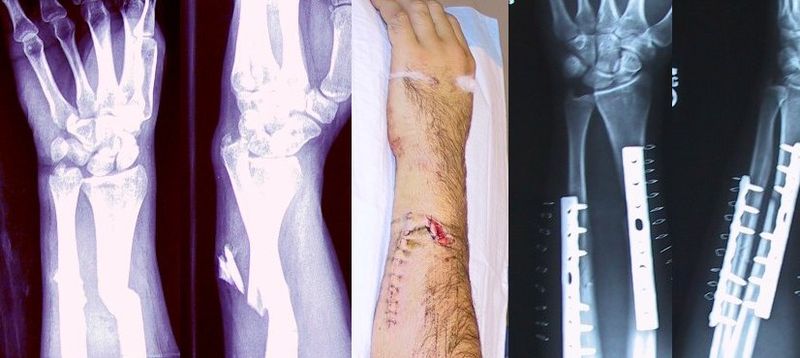
Check for Understanding
1. What are the functions of the skeletal system? List seven.
1)
2)
3)
4)
5)
6)
7)
2. Name two major components to the organization of the human skeletal system. List the bones included in each.
3. Compare and contrast the kinds of joints by completing the following table.
|
Type of Joint |
Movement Allowed |
Example |
|
Ball-and-socket |
|
|
|
Pivot |
|
|
|
Hinge |
|
|
|
Fixed |
|
|
|
Gliding |
|
|
4. Label the diagrams of the skeletons below:
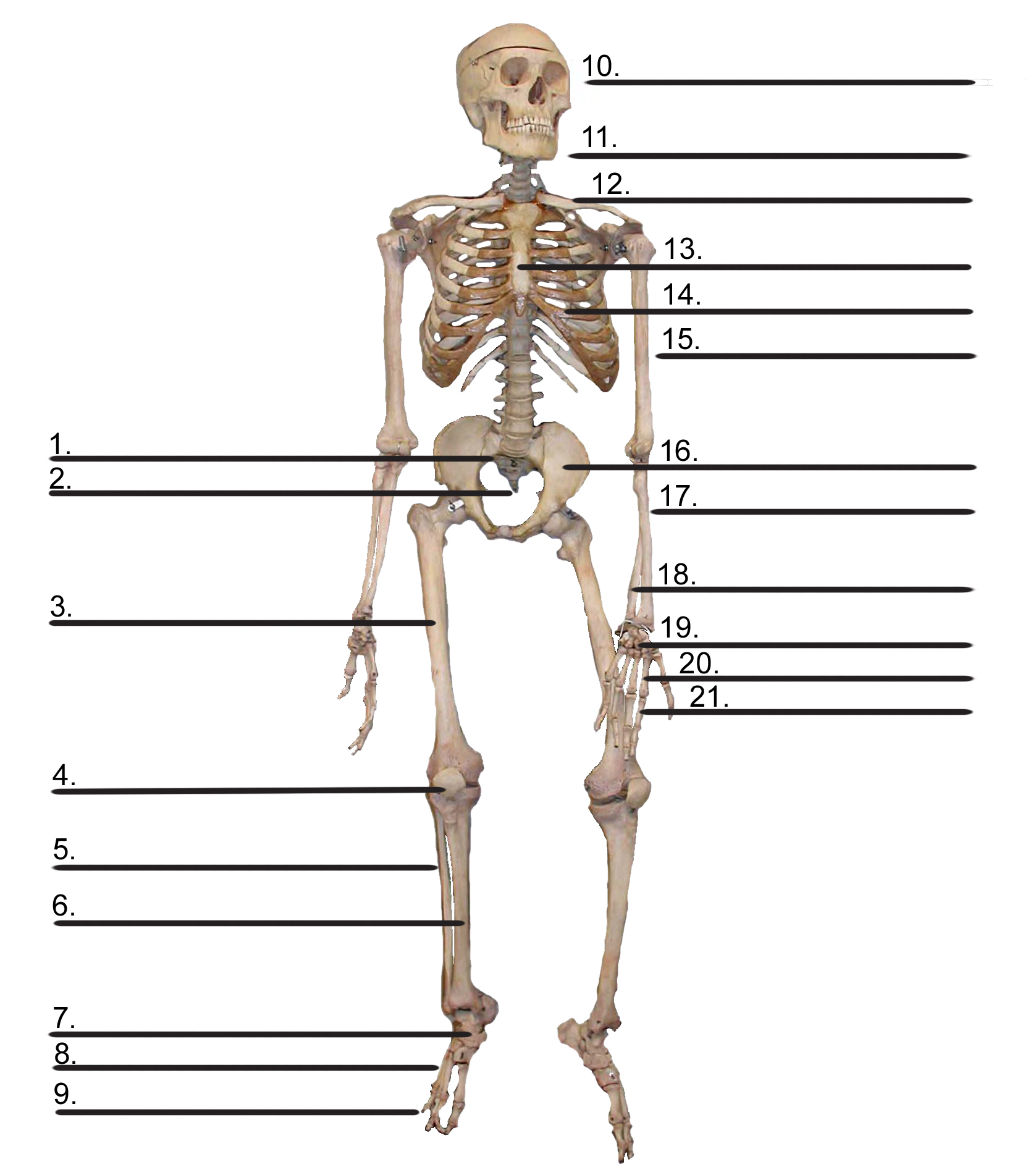
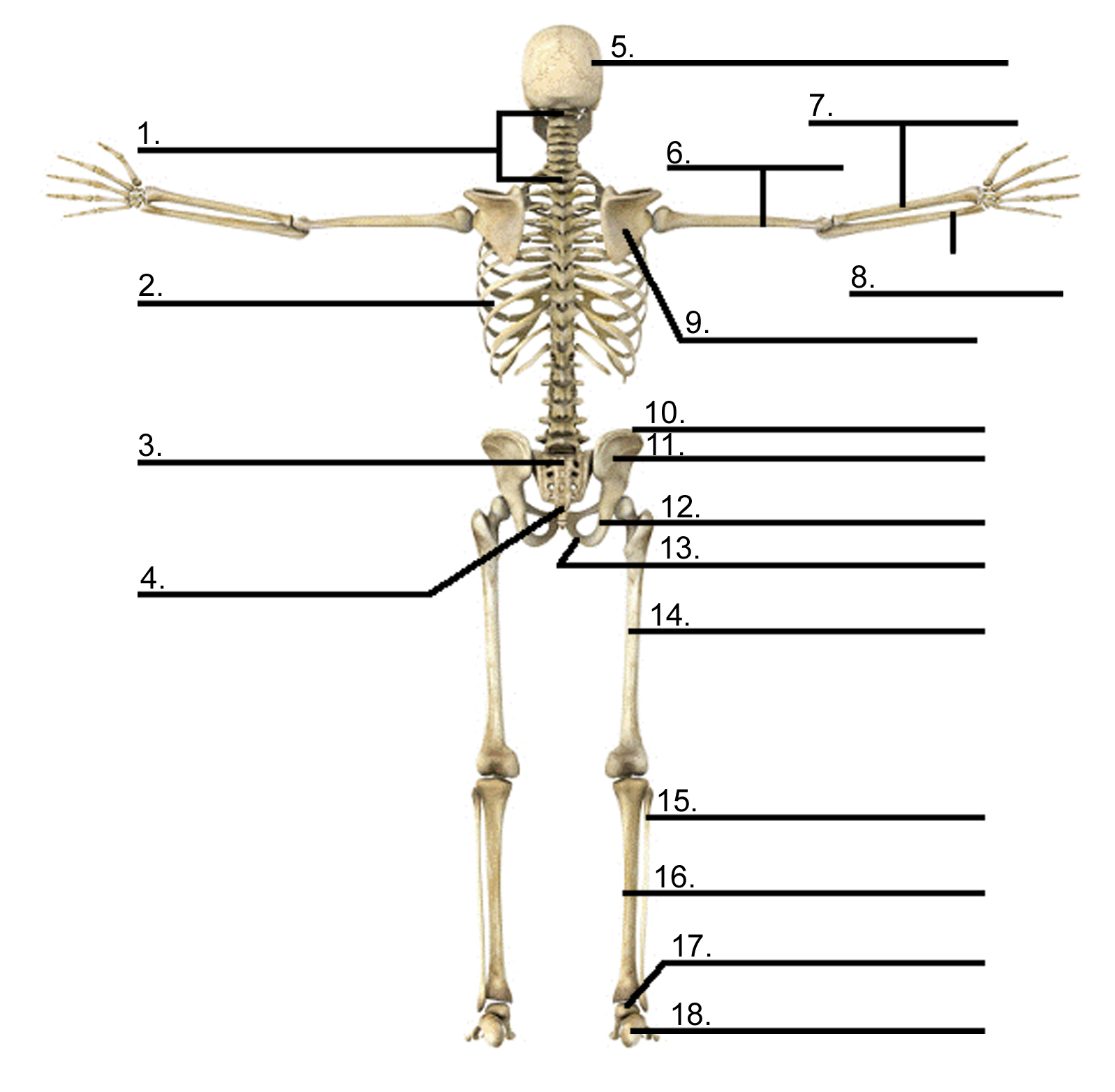
5. How do bones help regulate mineral levels in the body?
6. Why can’t bones grow from the inside out?
